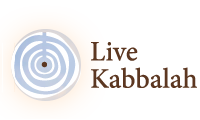Parashat Re’eh is one of the few parashot in the Torah for which there is no interpretation given in the Zohar, meaning that therein is profound hiddenness and concealment.
The very name of this parasha, “Re’eh” (See), connects us to the subject of sight and to the eyes that, according to the Wisdom of Kabbalah, represents the Sephira of Hokhma. This Sephira is attributed to the raw primal energy, the Light of Wisdom, a very powerful energy surrounding us this week.
The parasha opens with the words “See, I give before you today a blessing and a curse”. There is a wonderful commentary written by the Ohev Yisrael (the Apta Rav), in which he explains that many things are predetermined before we are born, except for those that are dependent on our free will, e.g., righteousness or evil. We arise each morning as we are faced with the emotions and feelings that grant us the opportunity to choose between a blessing and a curse, and this is the true essence of our lives.
The Apta Rav further expounds on the word “give”, which in Hebrew, “n-t-n” is a palindrome. It is the purpose of the Creator to benefit His creations, and His influence on us is only good. Hence, “a blessing or a curse” is then looked at in terms of how we relate to reality, which is in our control and for us to determine. The Ohev Yisrael labels this occurrence “truth and lies” – the way in which we relate and respond to situations in our lives. The “lie” is the preoccupation of oneself with trivialities, the minor things in life: Who said what? Who did what and why? It is the anger, the despondency, the feelings of victimization, and so on and so forth. The “truth” is when we have succeeded to enter into the enlightened state, which is the purpose of our lives. For this reason, our thoughts should be focused on “truth”, allowing us to be a “vessel” for enlightenment which will then be a presence within us at all times.
We must understand that we always are in awareness of the radiance of “See”, in an infinite, undiscriminating Divine Light, and the question is what we make of this radiance. The Kabbalists explain that there are two kinds of Light: Direct Light and Reflected Light. Direct Light emanates directly from the Source, and is also termed the Light of Wisdom, which is raw concentrated energy; its nature is to burn and sting, and is alternatively called Intense Light and the Light of Life. The only way to receive the Light of Wisdom and retain it, is by knowing that it is not ours, that we do not have anything but that which we give to others. By changing direction from wanting to receive only for ourselves to wanting to give, we create a new light called “Reflected Light”. If we want light, power and strength, we must also see to it that others have. We cannot allow ourselves to be an “end”, as the Light cannot dwell in a vessel that is an end result (selfishness and narrow-mindedness).
The Thought of Creation, which is to benefit the created beings, materializes when our deeds are in conjunction with the intent of making a difference and causing contentment for others. Connection to Divine enlightenment is then balanced and our self-interest becomes refined, allowing us connection to further enlightenment and receiving. The level of our selfishness determines whether the abundance we receive from the Creator is a curse or a blessing.
The reality of our lives is subjective, and the duality, the fluctuation between the blessing and the curse, depends entirely on us. The parasha begins with “See” and concludes with the story of the “false prophet”, reminding us that we really do not know what we are seeing and if what we perceive is true. And so, the only valid lenses through which we are able to see the reality in our lives are “Love your fellow men as you love yourself”, love, compassion, and the cycle of receiving in order to give and in order to make a difference, which is the true path to follow.
And above all, “Everything is in the hands of Heaven except the awe of Heaven” (Berakhot 33:) – when we acquire the broad vision of reality that is “the awe of God,” only then do we truly have free will.
To listen to the weekly Zohar Study click here
For additional study on Re’eh and other portions enter Live Kabbalah University
